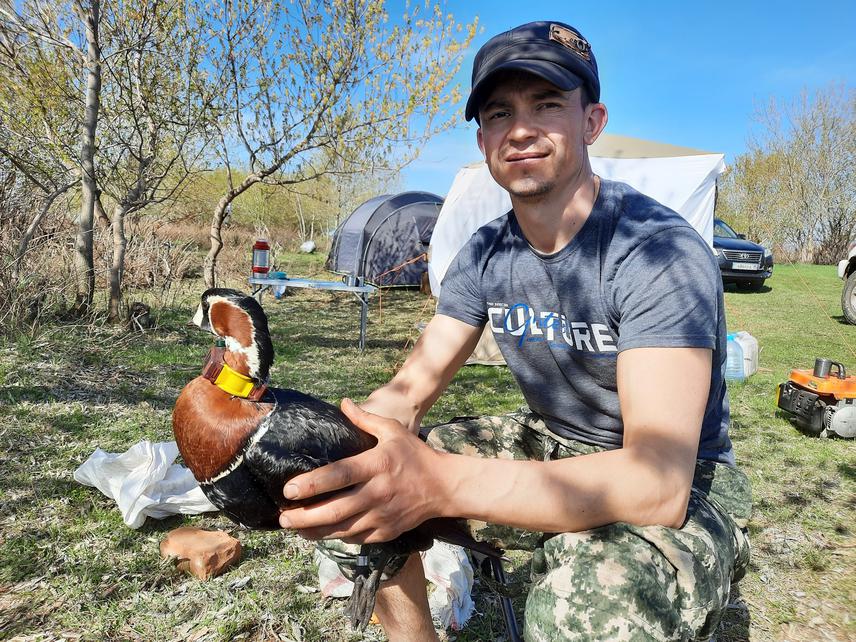Ivan Zuban
Other projects
18 Apr 2016
Research on a Condition of Populations of Geese and Brents during Migration and Nesting in the Conditions of the North Kazakhstan Area
18 Jul 2018
Studying Rare and Hunting Species of Geese and Branta in the North of Kazakhstan and Creation of Monitoring System and Set of Actions for their Protection
The main goal of the project is to assess the risks of death of red-breasted geese from poaching using satellite telemetry data, as well as to settle security measures at the places of their migration stops in Northern Kazakhstan.

A red-breasted goose marked with a collar-type satellite transmitter.
Northern Kazakhstan is a unique place in the range of the red-breasted goose, where almost the entire world population stops on a small area during spring and autumn migrations. This area is very important in the annual life cycle of these species. However, this area is very dangerous for birds, especially in the autumn period, when hunting for waterfowl is open. The experience of previous years shows that red-breasted goose is quite often extracted by unscrupulous hunters on the territory of Kazakhstan, as well as on wintering sites in Bulgaria and Romania. Only in the last 5 years, about 10 birds marked with transmitters in different parts of the range were shot by poachers, including 3-5 of them on the territory of Kazakhstan. Preliminary data from the marked birds (thanks to the financial support of Committee of science of Kazakhstan and Rufford Fund ) satellite transmitters in spring 2019 has enabled us to organize jointly with the regional on strengthening the protection of birds on stopover in the Northern Kazakhstan in the autumn of 2019, the First experience was very successful and this is why we believe that work must continue, and it is very necessary for the conservation of the species.
The main idea of this project is to continue trapping and marking red-breasted geese using satellite transmitters on the territory of Northern Kazakhstan.
Trapping and tagging red-breasted geese using satellite transmitters will allow you to study in detail the migration routes and wintering areas of the species, identify new key stopping places, and determine the level of impact of illegal hunting. The data obtained will allow us to predict the timing of migration and estimate the number of birds, which will allow us to develop protective measures in areas of large concentrations of migrating birds. In addition, various educational events will be held with local residents, which will increase the level of knowledge of local communities about the red-breasted goose.